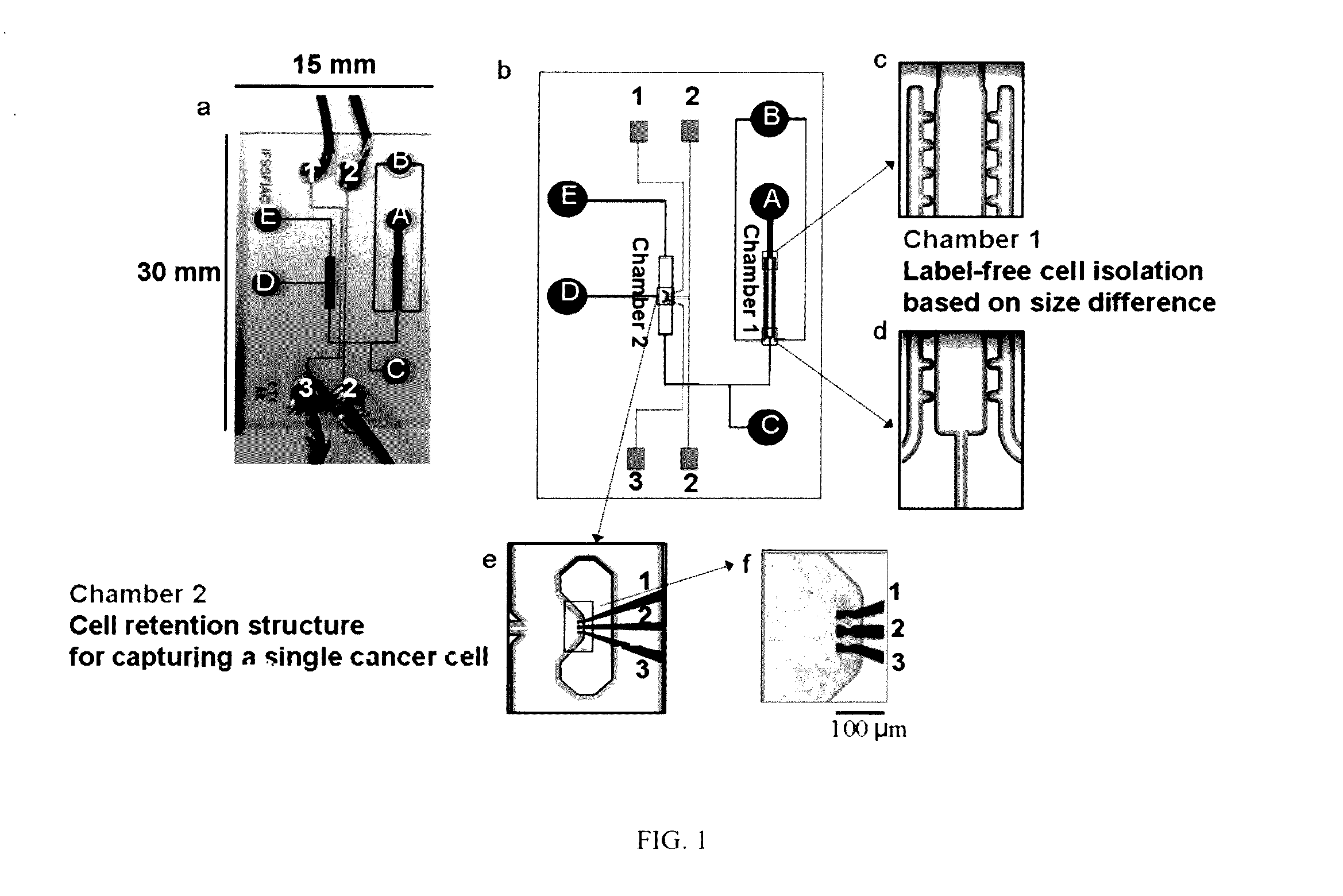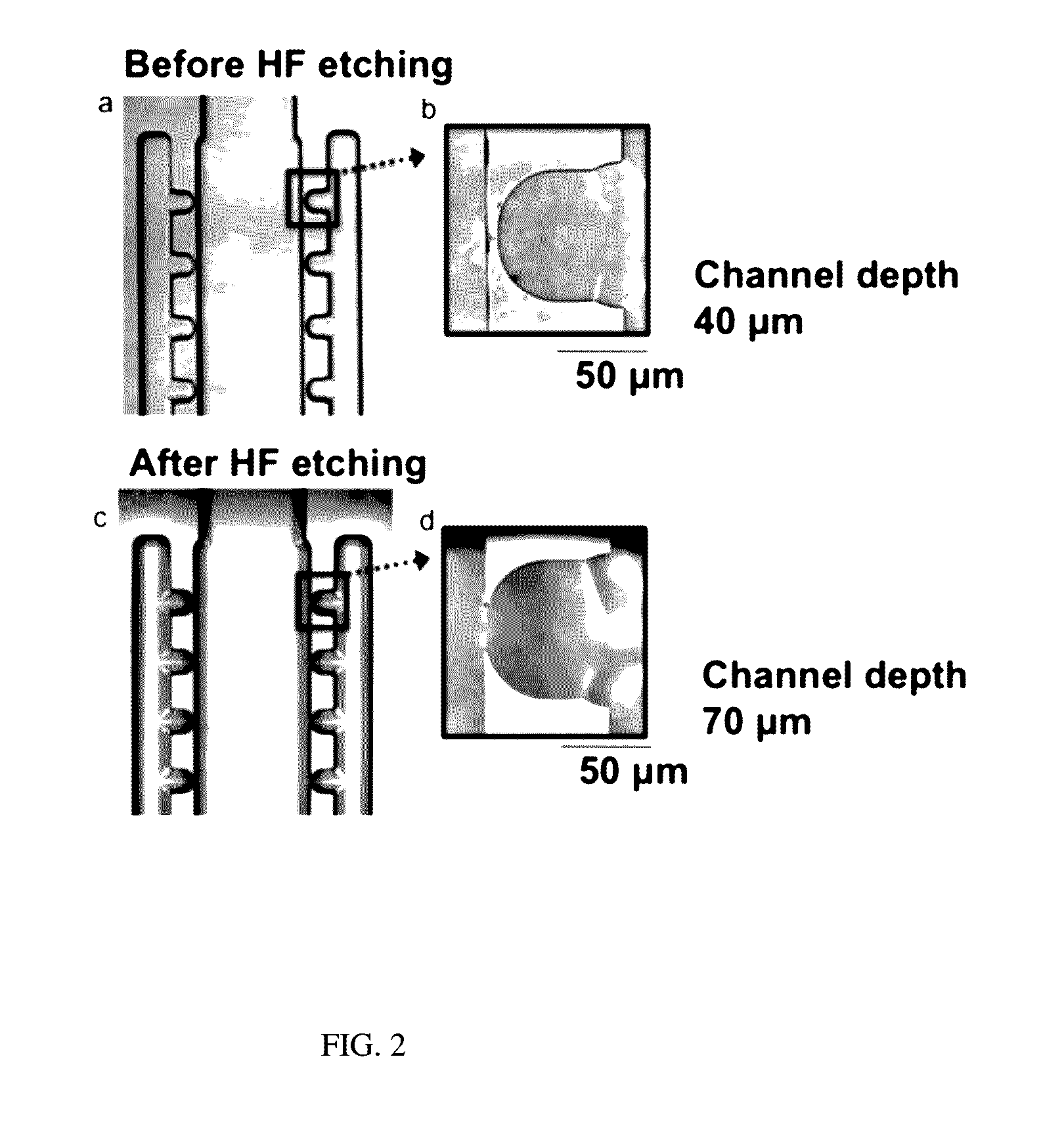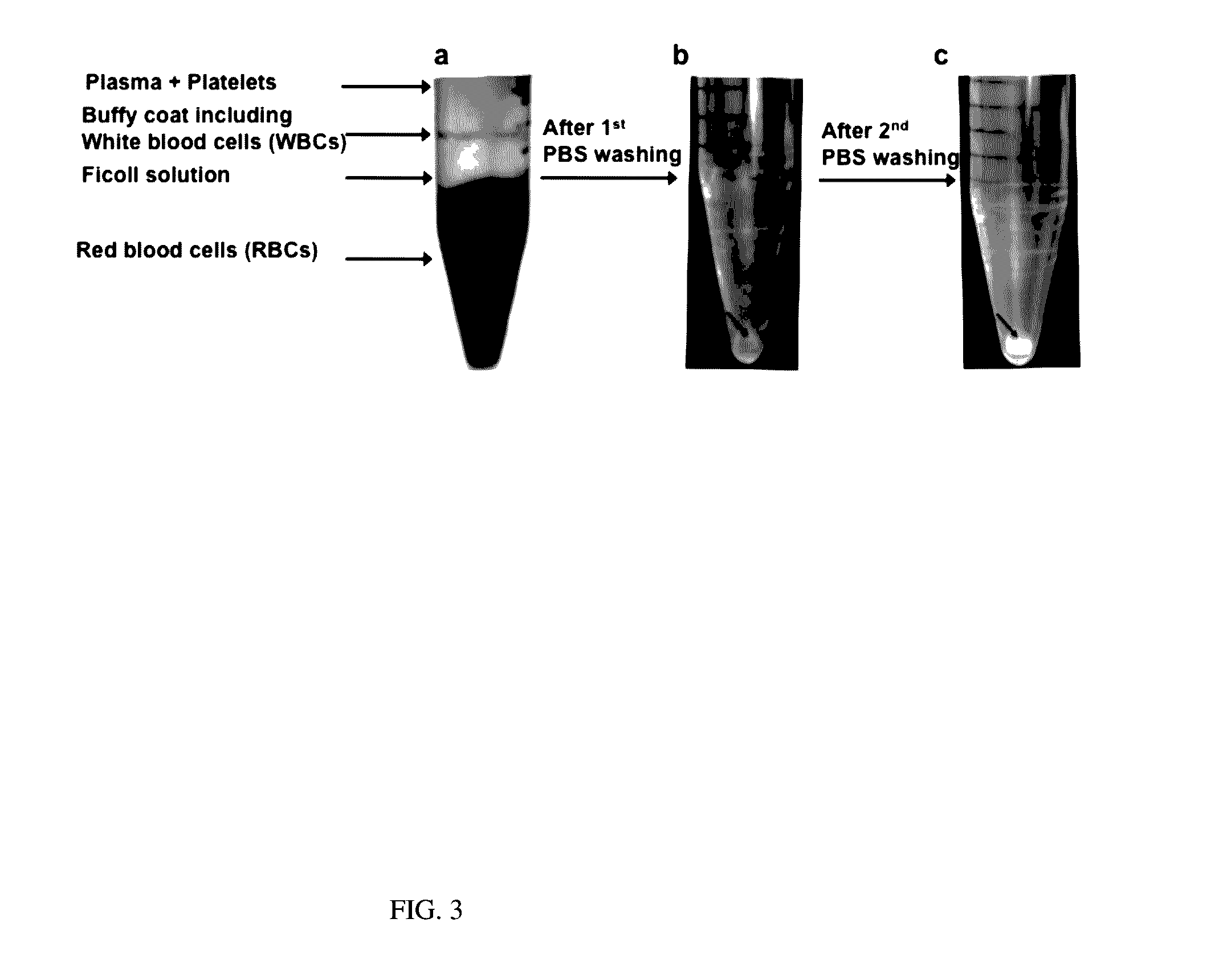Apparatus and Methods for Single-Particle Isolation and Single-Particle Measurement
- Summary
- Abstract
- Description
- Claims
- Application Information
AI Technical Summary
Benefits of technology
Problems solved by technology
Method used
Image
Examples
Embodiment Construction
[0045]Throughout the following description, specific details are set forth in order to provide a more thorough understanding of the invention. However, the invention may be practiced without these particulars. In other instances, well-known elements have not been shown or described in detail to avoid unnecessarily obscuring the invention. Accordingly, the specification and drawings are to be regarded in an illustrative, rather than a restrictive, sense.
Experimental Section
Device Design
[0046]An integrated microfluidic chip, dubbed the CTC chip, was designed using the L-Edit software (Tanners). As shown in FIG. 1, the layout of the glass chip (20 mm×30 mm) consisted of two chambers: Chamber 1 containing the sideward openings, and Chamber 2 containing the cell retention structure and dielectrophoresis (DEP) electrodes. Reservoirs A, B, E served as the cell inlet, blood cell collector and waste reservoirs, respectively; Reservoir C was used to move cells from Chamber 1 to Chamber 2; Res...
PUM
 Login to View More
Login to View More Abstract
Description
Claims
Application Information
 Login to View More
Login to View More - R&D
- Intellectual Property
- Life Sciences
- Materials
- Tech Scout
- Unparalleled Data Quality
- Higher Quality Content
- 60% Fewer Hallucinations
Browse by: Latest US Patents, China's latest patents, Technical Efficacy Thesaurus, Application Domain, Technology Topic, Popular Technical Reports.
© 2025 PatSnap. All rights reserved.Legal|Privacy policy|Modern Slavery Act Transparency Statement|Sitemap|About US| Contact US: help@patsnap.com



